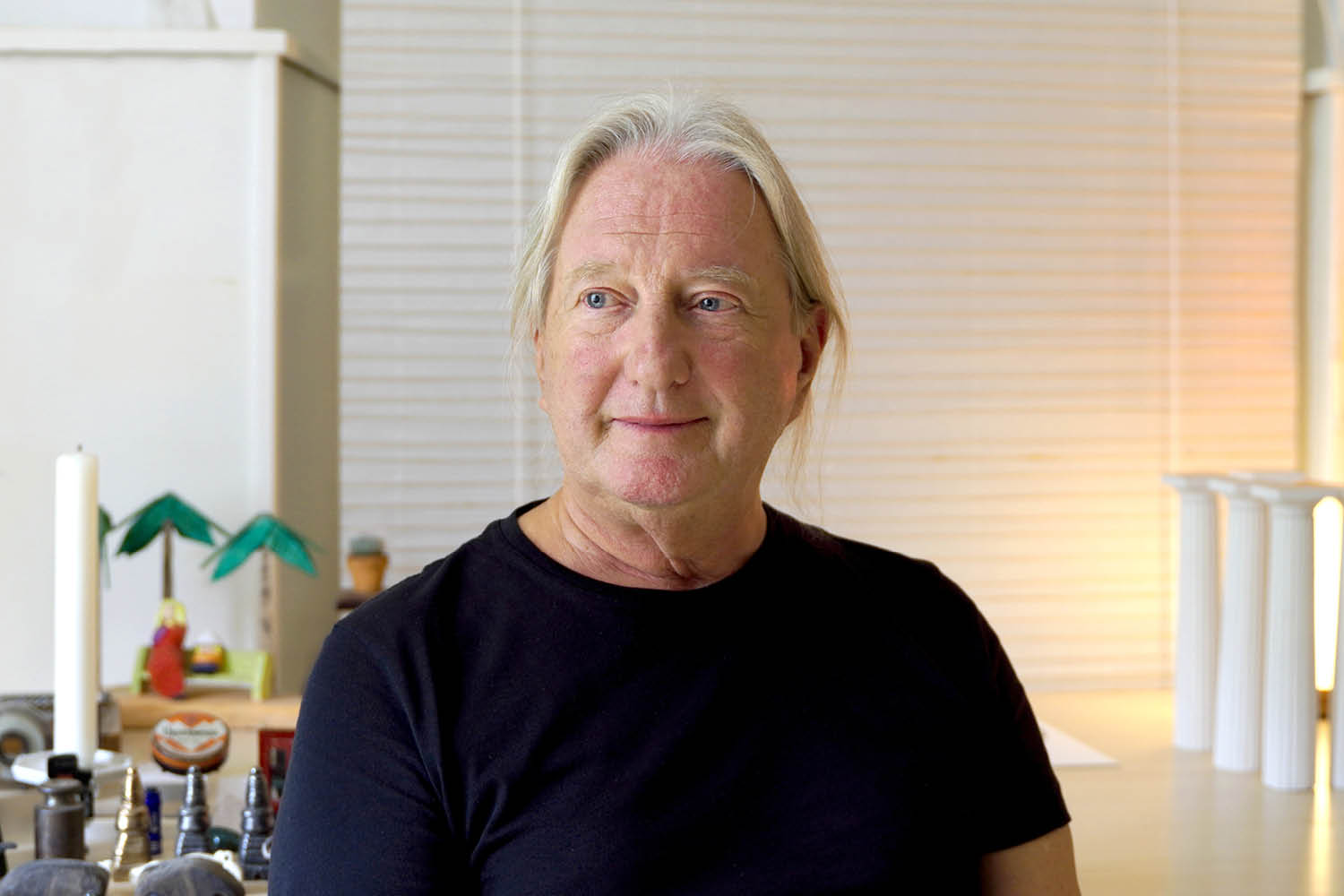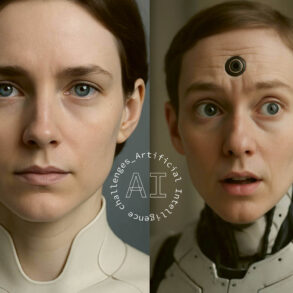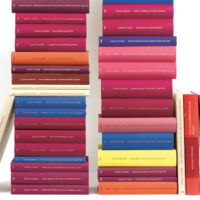We have made a pact with the heavens—each human being for themselves. We must remain faithful to it. This is what I took with me from my conversation with the painter Philip Nelson. We sat in front of his studio, in the summer twilight, looking at a blooming candle plant—a tower of light rising above us, an axis between heaven and earth.
We’ve all made a pact with our own province of heaven—to hold it in trust, and even more so, to hold ourselves thus. Presumably, the genius that hovers over each of us seals this contract, and if, in the bustle of everyday life, we forget our agreement, it’s this genius that, again and again, reminds us of it. Perhaps, it’s this bond that is the magic in the appearance of beauty in every human face. And, perhaps, as my intuition tells me, if we live this promise with our heavenly origin, then a life becomes a work, a stone of the new Jerusalem.
Lonely, But Never Alone
Philip Nelson’s stone contains 3,400 paintings that he created over forty years; he has sold 1,200: documents of his alliance, because, he assures me, he has always remained faithful to his agreement, and because he continues, he knows that a soul compromise would cost him his inspiration. Again, presumably, however much artists play and experiment, however much they let their imagination run free and are thereby freer than other mortals, when it comes to this higher bond, then it is they who are chained. These are chains that artists place upon themselves. Philip tells me his struggle is “in” the painting and not “on” the painting! I ask him if any of the darkness of the world’s abysses makes it into his paintings. Philip: “Never,” and he laughs. “No, never. Not once. Really not.” He has to bring it into harmony, transform it into good. “We’re so shattered by the evil that’s raging in the world, we’re being overrun. I can create in the chaos, but I never create chaos. This is a struggle within which I stand in the fire. This transformation is what it’s about! This alchemy, on the way to beauty.” “What Rudolf Steiner calls ‘climbing into the skin of the dragon,’ this happens in the process?” Philip: “That’s a process, it’s the struggle, and I’m amazed I never died in the process. Honestly. My sense of humor and my willpower get me through it. One can’t see the struggle in the painting, but all my scars are there.” At an exhibition, my gaze wanders from Philip’s paintings to the exhibition visitors. Some are quiet and wholly focused on a painting, alone with themselves. This probably mirrors what Philip says in conversation: “It’s a lonely path to paint a painting—and yet, I am never alone in the process.”
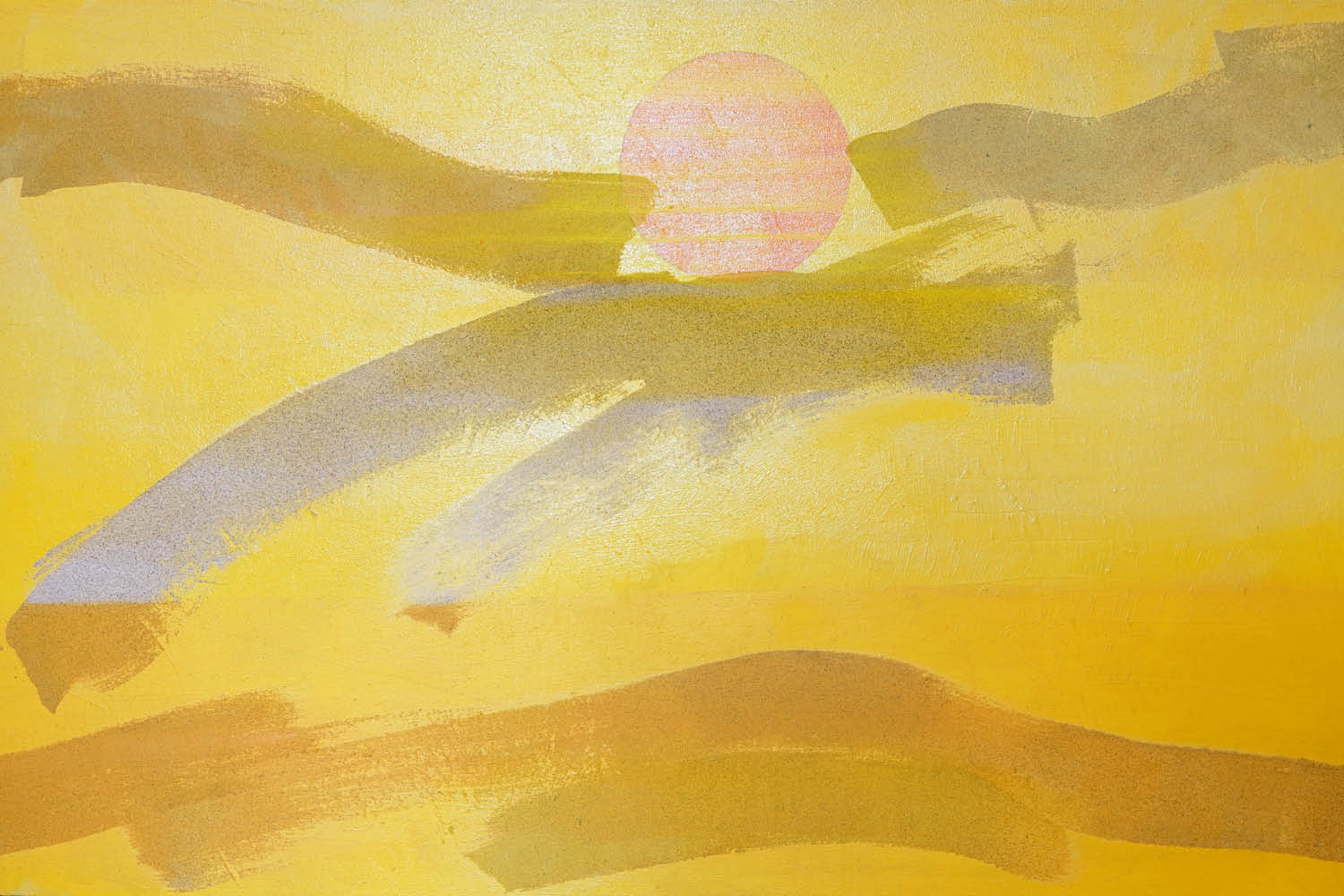
Three In the Morning
There is always a smile around Philips’ eyes. “And none of that struggle can be seen in the painting?” “No, it’s not in the painting, but it is preserved in the deeper layers of the painting. Perhaps, in the future, X-rays will be used to make these layers visible. But the struggle is not in the result. I live for the result, and there is this little voice inside me that speaks up, and then I know it’s over.”
That (or so I understand Philip Nelson) is part of his agreement, this struggle not to go off the path. He cannot determine when it’s over alone, and—also probably part of this earthly-heavenly co-creation—neither can he decide its beginning.
“Sometimes I feel like I’m a midwife, a birth attendant. I always have to be ready when the baby announces itself, even if it’s at three o’clock in the morning. For me, the baby is not physical but spiritual. You have to be ready when it comes. If I’m not available, I get sick. Fortunately, I don’t need much sleep; three or four hours is enough, so I’m there when such an inspiration announces itself.”
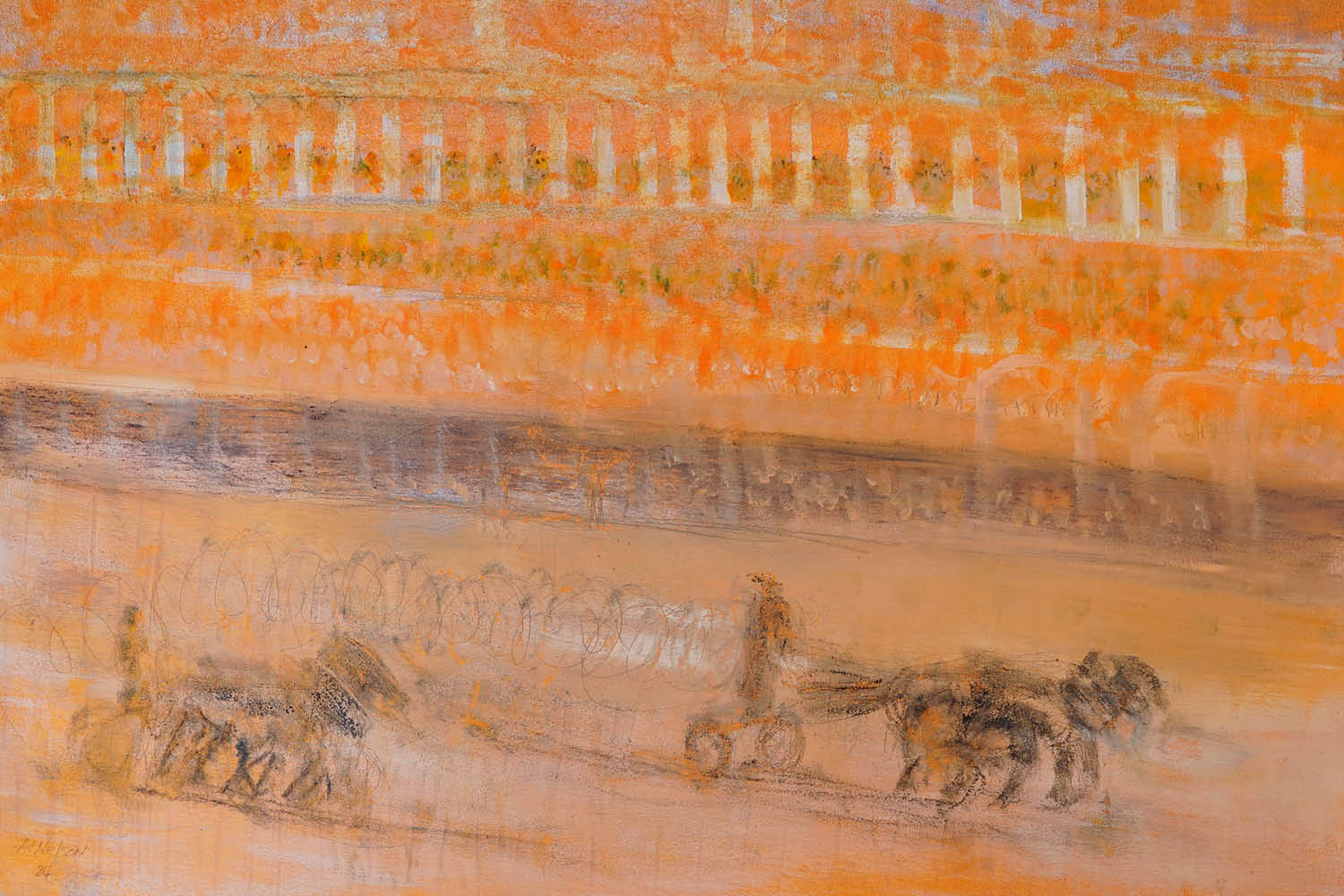
Not a Thought, But a Power
“You drive a black car and like to wear black clothes, and yet black is not to be found in any of your paintings. Why?” Philip: “I don’t know why, and in fact, I’ve never painted black, not once, except for black lines. I think it’s not right to paint black. It just doesn’t come. That’s not a thought; that’s a power.” “Is that also part of the contract—to submit to such a decree?” Philip: “By the way, I can hardly wear colored clothes. There is so much color in me—a fire of color.”
“Is it part of your heavenly contract that you don’t own a cell phone or a computer?” “I address all invitations by hand. The day before yesterday, I thought: my God, you have written 25,000 addresses by hand. Yes, a computer would disturb my imagination. I respect technology, so this is not a judgment of others. But I can’t stand technology when I’m painting—I’m sensitive to it. It was a big decision when I received my diploma in film in the USA in 1976 and also won a prize. Many people around me said that I would probably go into film. In that moment, I felt I couldn’t do it. Later, when I got to know anthroposophy at Emerson College, I understood better why that is the case for me.”

Time Becomes a Picture
Every painting captures an instance, holds a moment. Just as music is able to be painted, painting is able to sound, showing the inside of a moment. Five years ago, Philip Nelson had already spanned this arc between time and space. He created seven paintings for the seven cultural epochs described by Rudolf Steiner.1 My recent visit to his studio serves an inverse undertaking by Philip. While the previous work was about capturing millennia in a painting, he now goes the polar opposite way with the brush: capturing the moment within which a millennium occurs. “The inside of the moment is eternity,” writes Plato, and Philip has now brought such eternal moments into pictures: Cleopatra, waiting for the arrival of her lover Mark Antony at the port of Alexandria. Although Mark Antony was overshadowed by the great rulers Caesar and Augustus, he inscribed himself in world consciousness through his love for Cleopatra, the last Egyptian pharaoh. Shakespeare’s play Antony and Cleopatra certainly contributed to this. The literary speech of Antony at Caesar’s court has become a rhetorical masterpiece in the series of great historical speeches. In 1963, Cleopatra was the most opulent Hollywood film to date and brought the Roman-Egyptian story of love and war into the twentieth century. Another moment chosen by Nelson is from the decline of Egypt. Three oracles shaped the political fortunes of Europe and the Middle East in ancient times: Delphi, Dodona in northern Greece, and Siwa on the Egyptian-Libyan border. Like his mythical role models Perseus and Heracles, Alexander wanted to visit the desert town of Siwa and, in 331 BC, set out on the dangerous, 200-kilometer-long journey through the Libyan Desert in a sandstorm and heat. The historian Plutarch describes a memorable moment when Alexander reached the oracle. The priest would have been thought to greet Alexander with “O paidion,” meaning “O my child.” But, inexperienced in Greek, he said, “O paidios” [interpreted as “O pai Dios”], which means “son of God [Zeus].” Alexander, according to Plutarch, immediately seized upon this exaggeration. Whatever actually happened, it was here that the foundation was laid for Alexander’s apotheosis and also for his campaign in the Orient, where he carried Greek culture as far as India. The oracle approved of his aspirations for world domination.
One painting shows a lion with a child. “For me, this is the birth of Greece,” explains Nelson. If the founding of Rome was the she-wolf, here it is the lion. He dedicates a painting to Rome showing a chariot race in the Hippodrome. What are now major media events have their origins in these arenas of antiquity, because unlike Greek races, where the focus is on athletic competition, the Roman “circus” was about entertaining the audience. Nelson’s moments of world history invite us to grasp the inside of these moments, where history lifts itself out of the temporal course and streams out far into the future.
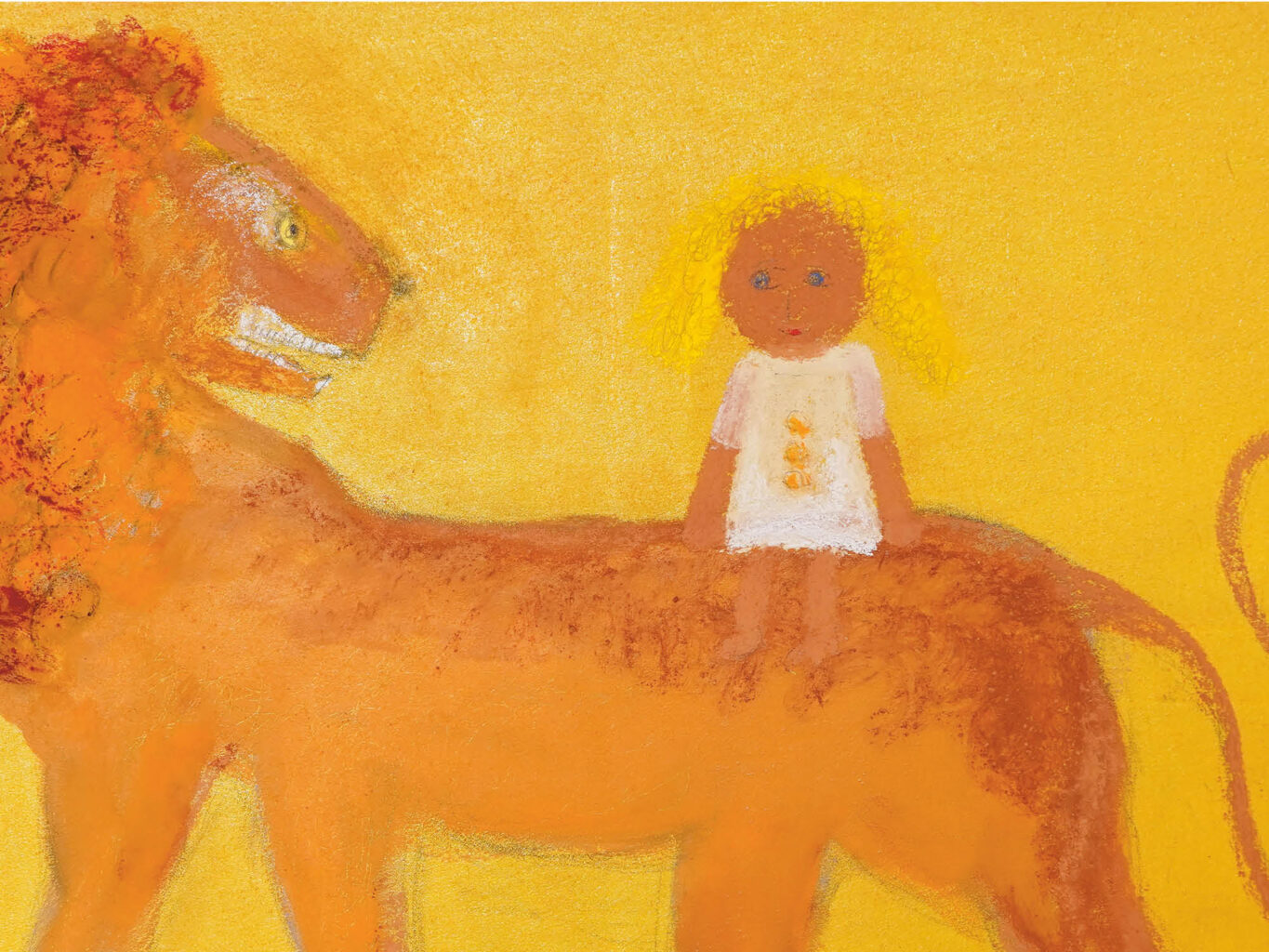
Not I, But the Paintings
“When interested people visit your studio, do you have a sense of who will discover which painting?” Philip: “Sometimes I’m fairly sure they’ll buy a certain painting. This is especially true for art collectors. But I never say a single word because, for me, it’s a sin. It would break my inspiration. It’s often a mystery how paintings find their way to human beings. Once, someone in a tavern in central Switzerland saw a painting of mine on a poster and was captivated. Two years later, he heard my name in Basel and searched for me for weeks. Then, he came to the studio, and the painting hadn’t been sold—it was still in the studio. He saw the painting, and it had been waiting for him for three years. I have often experienced this. I feel like I am at the center of inspiration, but these inspirations are not mine.”
When Philip Nelson tells me about earlier meetings, including those in larger groups, I become conscious of the power of his photographic memory. He can picture in his inner eye who was sitting where at the table and what color their clothes were, and he can even add the date off the cuff. “Do these paintings come to you, or do you have to conjure them up?” I ask. “I only do so when someone asks me or asks for something in particular or when there’s a reason to call up a painting.”
In conversation with Philip, seriousness and inward responsibility are mentioned time and again. “Is seriousness the medicine for our time?” Philip Nelson: “Yes, I think Europe is falling apart; what held it together has lost its force. I’m not afraid. I do what I can.” “You often paint children, teenagers, or adults; I don’t find old age in your paintings.” Philip Nelson: “I believe I’m 25,000 years old, but the child in me is still alive, and it’s nine or ten years old. It plays and is infinitely serious.”
“Absolutely, and children see when someone is lying. They are fascinating to me. They are still spiritual. They believe that we all come to Earth as good human beings, and you really notice that when you play with children. They can take a small stone and play with it for hours. I was the same as a child. I grew up in the desert. I played with scorpions and rattlesnakes. It’s a pity we didn’t meet back then; we would have had a lot of fun.”
Philip says that he painted two hundred children and young people and that almost all of these paintings have been sold. “People like this youthfulness and freshness—human beings sitting and dancing in a tavern. That’s what I painted, but not a single older person.” “Is that the love of life?” Nelson: “Yes, I believe it, certainly. I love life.”
Exhibition of paintings
From Oct. 13–Nov. 17, Sundays 1:00–6:00 pm or by telephone appointment. Atelierhaus, Brunnweg 3, Dornach, 4143, Switzerland.
Translation Joshua Kelberman
Title image Philip Nelson in his studio; Photo: Wolfgang Held
Footnotes
- Wolfgang Held, “Die sieben Kulturepochen: Eine Begegnung mit Philip Nelson” [The seven Cultural Epochs: An Encounter with Philip Nelson], Das Goetheanum 98, nos. 39/40 (Sep. 26, 2019).

